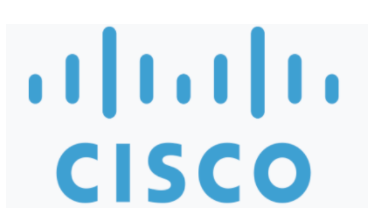5.3.1: Introduction
- Page ID
- 22736
\( \newcommand{\vecs}[1]{\overset { \scriptstyle \rightharpoonup} {\mathbf{#1}} } \)
\( \newcommand{\vecd}[1]{\overset{-\!-\!\rightharpoonup}{\vphantom{a}\smash {#1}}} \)
\( \newcommand{\id}{\mathrm{id}}\) \( \newcommand{\Span}{\mathrm{span}}\)
( \newcommand{\kernel}{\mathrm{null}\,}\) \( \newcommand{\range}{\mathrm{range}\,}\)
\( \newcommand{\RealPart}{\mathrm{Re}}\) \( \newcommand{\ImaginaryPart}{\mathrm{Im}}\)
\( \newcommand{\Argument}{\mathrm{Arg}}\) \( \newcommand{\norm}[1]{\| #1 \|}\)
\( \newcommand{\inner}[2]{\langle #1, #2 \rangle}\)
\( \newcommand{\Span}{\mathrm{span}}\)
\( \newcommand{\id}{\mathrm{id}}\)
\( \newcommand{\Span}{\mathrm{span}}\)
\( \newcommand{\kernel}{\mathrm{null}\,}\)
\( \newcommand{\range}{\mathrm{range}\,}\)
\( \newcommand{\RealPart}{\mathrm{Re}}\)
\( \newcommand{\ImaginaryPart}{\mathrm{Im}}\)
\( \newcommand{\Argument}{\mathrm{Arg}}\)
\( \newcommand{\norm}[1]{\| #1 \|}\)
\( \newcommand{\inner}[2]{\langle #1, #2 \rangle}\)
\( \newcommand{\Span}{\mathrm{span}}\) \( \newcommand{\AA}{\unicode[.8,0]{x212B}}\)
\( \newcommand{\vectorA}[1]{\vec{#1}} % arrow\)
\( \newcommand{\vectorAt}[1]{\vec{\text{#1}}} % arrow\)
\( \newcommand{\vectorB}[1]{\overset { \scriptstyle \rightharpoonup} {\mathbf{#1}} } \)
\( \newcommand{\vectorC}[1]{\textbf{#1}} \)
\( \newcommand{\vectorD}[1]{\overrightarrow{#1}} \)
\( \newcommand{\vectorDt}[1]{\overrightarrow{\text{#1}}} \)
\( \newcommand{\vectE}[1]{\overset{-\!-\!\rightharpoonup}{\vphantom{a}\smash{\mathbf {#1}}}} \)
\( \newcommand{\vecs}[1]{\overset { \scriptstyle \rightharpoonup} {\mathbf{#1}} } \)
\( \newcommand{\vecd}[1]{\overset{-\!-\!\rightharpoonup}{\vphantom{a}\smash {#1}}} \)
Communication is almost as vital to us as air, water, food, and shelter, ranking just below our need to sustain life itself.
Today, networking systems have enabled people to connect from anywhere. Individuals can communicate and collaborate immediately with others. News ideas and discoveries are shared with the world in seconds. People can indeed interface and play with others without the physical barriers of seas and landmasses from wherever they locate.
How long can you go without the Internet and associated networks? What would be the impact of having no Internet on your learning, communicating, and collaborating with others, just to name a few?
Networks Support the Way We Learn
Networks have changed how we learn in profound ways. Students can now take online courses from anywhere, allowing them to learn from top instructors around the world and giving students the flexibility of when they complete their work and meet the requirements. Digital learning resources like video tutorials and simulations augment course materials. Learners can collaborate through messaging, video conferences, and shared online documents. For today's students, networks remove geographic barriers and are integral to how today's students approach education.
Networks Support the Way We Communicate

Figure \(\PageIndex{1}\): Social media, Digitization, Faces image. Image by Gerd Altmann from Pixabay is licensed CC BY NC
Networks have revolutionized communication and collaboration. Here are some of the key ways:
Social Media
Platforms like Facebook, Instagram, X (Twitter), TikTok, and Snapchat dominate the social lives of most students, allowing you to instantly connect with friends, classmates, family, colleagues, employers, businesses, influencers, celebrities and public figures across the globe. These sites and apps are designed for sharing photos, videos, messages, and other user-generated content. From chatting privately to broadcasting to the world, social media enables continuous digital interaction.
Collaboration Tools
Tools like Slack, Microsoft Teams, Google Workspace, Discord, and Zoom have become essential for collaboration at school and work. You can chat one-on-one or in groups, video conference, co-author documents, share screens, assign tasks, and work together in real-time from anywhere. These tools enable seamless teamwork on group projects and remote work. Wikis like Wikipedia demonstrate the power of crowdsourced content creation.
Wikis
Wikipedia, the free online encyclopedia, is a prime example of a publicly editable wiki. This revolutionary concept allows anyone to contribute and edit articles, facilitating content creation by subject matter experts and passionate amateurs. Businesses often use private wikis on their corporate networks for internal documentation, knowledge management, and collaboration.
Networks Support the Way We Work
Networks are essential to almost every aspect of work today: communication, collaboration, operations, transactions, remote access, and more.
Relying on computer networks and the internet, the workplace of today depends heavily on information technologies, The communication tools to support communication and collaboration mentioned earlier apply equally to businesses to allow sharing of data, and collaboration among teams and external partners seamlessly. Video conferences enhance inclusivity by integrating remote teams together besides saving travel costs. Remote and hybrid work models would not be possible without the networks and the Internet. Email and instant messaging have revolutionized business communication for rapid coordination. Online commerce relies on secure business networks for payment. Reliable access, speed, and security have become critical success factors for an organization.
Networks Support the Way We Play
Networks have expanded new ways for us to have fun, and make friends from anywhere in the world.
Online multiplayer gaming allows friends to play allows friends to play the same game together in real-time from different locations over the internet. Media streaming services like Spotify, Netflix, and YouTube provide on-demand access to music, movies, and more. Social media lets fans follow their favorite players, celebrities, and influencers in real-time. Dedicated online communities form around particular games, TV shows, hobbies, sports teams, and pop culture, allowing users to share their passion. Without smartphones and mobile networks, we could not consume content anywhere, anytime.
Technology Then and Now
Envision a world without the Internet. No more Google, YouTube, texting, Facebook, Wikipedia, web-based gaming, Netflix, iTunes, and simple access to current data. No more social media, staying away from lines by shopping on the web, or rapidly looking into telephone numbers and guide headings to different areas at the snap of a finger. It's astonishing to think how much networks have transformed communication, information access, and our daily lives in just the past 10-20 years. Compare the technologies used in the early 2000s to today - from simple text messaging to entire social media worlds, from slow dial-up Internet to video streaming, from basic websites to immersive apps and games.
No Boundaries
Advances in network technologies have made geographic distances and physical limitations far less significant. People can now collaborate and share ideas without the barriers of location or time zones.
Cisco is a global technology leader that designs, manufactures, and sells networking hardware, software, services and other technologies that power the Internet and corporate networks.

Cisco Systems has been a major player in shaping modern communication and commerce through their influence on networking and internet infrastructure. Some key ways Cisco has made an impact:
- Cisco routers and switches have powered the growth of the Internet since its commercialization in the 1990s, helping route trillions of packets globally each day.
- Cisco advocated open standards and interoperability early on, helping the Internet avoid fragmentation. This promoted competition and innovation.
- Cisco acquired dozens of companies that created new product capabilities, business opportunities, and even entire industries like enterprise videoconferencing.
- Cisco certified over 2 million networking professionals globally through its Networking Academy, building the talent base for operating complex networks.
- Cisco anticipated major trends like unified communications, smart grid technologies, telepresence, 5G, and the Internet of Things - introducing new products, partnerships, and acquisitions to lead each wave.
- Cisco's leadership in networking spilled over into adjacent opportunities in cybersecurity, cloud, collaboration tools, services, and more as connectivity became integral to technology.
Without its infrastructure and solutions, global teams, global outsourcing, online commerce, and the yper-connect edworld, just to name a few, would not be possible.


